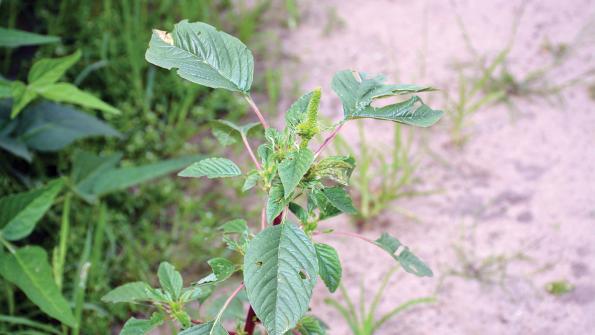November 11, 2016

Palmer amaranth with multiple herbicide resistance is nothing new to the Mid-South. But farther north, the recent discovery of pigweed resistant to glyphosate and PPO herbicides was novel.
Where and how was the pigweed found?
“We’re reporting this because it’s in our state,” says Kevin Bradley, University of Missouri weed scientist. “However, it really was discovered as a result of a retailer sending suspicious pigweed samples, Palmer amaranth in a soybean field, in for testing.
“The University of Illinois has a service they provide – a rapid screening of different types of herbicide resistance. They can turn a sample around in a day, or two.”
IT’S FREE! Stay informed on what’s happening in Mid-South agriculture: Subscribe to Delta Farm Press Daily.
Outside the Bootheel, “we don’t really have a lot of Palmer in Missouri,” says Bradley, who was reached by phone in an airport before heading out of the country for several weeks. “There is a pocket around St. Louis in the river bottoms. That’s where these pigweeds were found. Once tested, the sample came back positive for resistance to glyphosate and PPO herbicides.”
Bradley and colleagues “wanted to let people know about this find” so they can be on the lookout. “The Midwest has been dealing with multiple-resistance waterhemp for over 10 years. Considering everything, I wouldn’t characterize this Palmer find as a big shocker.
“As far as I’m aware, so far, this is the farthest north multiple-resistance pigweed has been found. There’s glyphosate-resistant Palmer amaranth all the way into Michigan and Indiana. But I’m unaware of any of that has PPO resistance.”
What about university recommendations for control?
“As far as management our recommendations for control aren’t any different than those for multiple-resistance waterhemp.
“I’m unsure what they’re planning to plant in that field next year. But if it’s soybeans, the producer should use proper pre-emerge products, a residual herbicide and multiple modes of action.”
Many Missouri soybean growers have already moved to LibertyLink systems. “About 40 percent of the soybeans grown in the state are now LibertyLink. They’re just trying to find ways to fight the multiple resistances in weeds.
“This is an awareness issue as much as anything. Our growers, I believe, are already informed on the resistant waterhemp. With this discovery, it’s like ‘Man, what’s this going to turn into?’”
Bradley says the lack of lag time before multiple resistances appear in pigweed could prove frustrating. “We don’t have a lot of Palmer in most of the state yet. It would be awful if it spreads and we’re already being forced to deal with multiple resistances.”
You May Also Like




